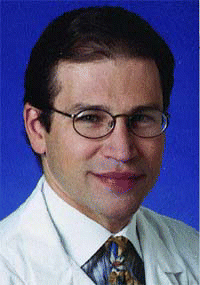Adults can usually undergo the implant surgery while under local anesthetic or sedation, said Dr. Marzo. It is generally an outpatient procedure that takes 30 to 45 minutes, he added.
Explore This Issue
October 2007In children, the surgery is performed with general anesthetic and often in two stages because pediatric patients have thinner tissue and bones, said Dr. Kohan. The first stage involves placing the titanium implant. The second stage of exposing the implant and attaching the abutment and processor occurs three to six months later, after osseointegration occurs, he explained.
Lately, we’ve been doing the procedure in one stage, said Dr. Kohan. He and his colleagues documented the safety of the one-stage procedure in a retrospective review of 27 children who underwent BAHA in 30 ears between 2002 and 2006. These data were also presented at COSM.
Complications
Skin overgrowth of the abutment and infection are the most common complications associated with having a BAHA implant, said Dr. Tjellström.
However, careful cleaning of the implant area can help to prevent these events. The first patient to receive a BAHA in 1977 has not had a single episode of an adverse skin reaction, said Dr. Tjellström.
Although complications are often preventable, sometimes revision surgery is necessary, said Dr. Marzo. He and his colleagues recently conducted a retrospective review, presented at COSM, of BAHA procedures performed at his institution between September 2003 and September 2006 to see how many required revision.
Ninety-two BAHA implantations were performed on 80 adult patients for unilateral conductive, mixed, or sensorineural hearing losses. Of these individuals, 10 underwent 11 revision procedures, with one patient requiring two reimplantations.
Four patients experienced loss of their skin grafts probably because of increased scalp soft tissue thickness, they reported. The remaining six patients experienced skin overgrowth, which physicians addressed with longer abutments and good wound care.
Another possible complication that did not occur in the study is device extrusion, noted Dr. Marzo. However, this is also preventable with good surgical technique and follow-up wound care.
Also of note is that the abutment can break due to trauma from games or sports, although wearing a helmet can prevent this from happening, added Dr. Kohan. Additionally, osseointegration fails to occur in about 5% of patients, he said.
Room for Improvement
While BAHA can successfully provide patients with good hearing, there is room for improvement, said the experts interviewed for this article.

Leave a Reply